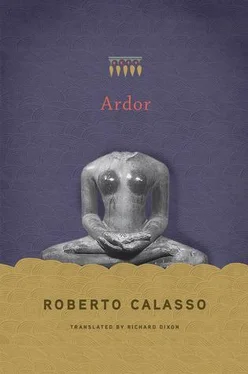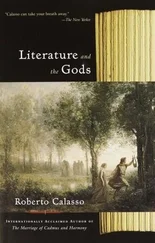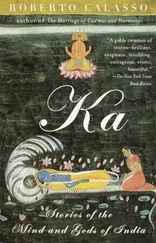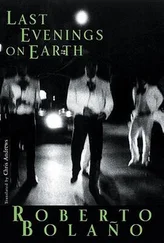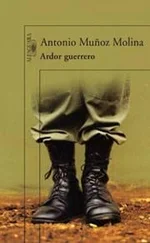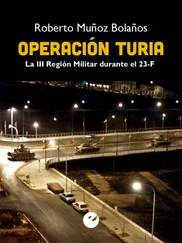The clearing used for celebrating the sacrifice was a setting where there was a risk at every step of offending or disturbing some presence. The water had to be placed to the north of the fire, not too far away. A short invisible line joined them. And the officiant had to take great care not to cross it. So powerful was the eroticization of the space — and above all that bare space where the officiants moved — that it is easy to see why they felt no need to make simulacra. The air was already crowded with them.
But fire and water were not the only powers that had to be heeded. The sacrificial ground was besieged by a mass of intruders — for the gods there were the Asuras, their brothers and enemies; for the officiants there were the Rakṣas. For the sacrificer, all of them were his rivals, his enemies. Nothing pleased these intruders more than interrupting the sacrificial work. To chase them off (over and over again, since they never let themselves be overcome once and for all) various stratagems were needed. The first was silence: the liturgy begins when speech is held back, for only silence assures continuity, unmarked by syllables and verbal forms. In the silence of mental discourse, such forms still exist, but as if reabsorbed in an aqueous element, from which they surface for just long enough to be submerged once again. Another stratagem is fire. Bringing the liturgical objects close to the flame is like beginning the process of tapas , “ardor,” that constant production of heat, in the mind and in the liturgical act, which will encompass the whole rite and will defend it from outside. The intruders will be driven back, flayed.
* * *
The scene of the sacrifice is an empty open space on a slight slope, dotted with the fires and the altar. The bitter conflict of elements that is about to take place has to be mitigated. The tips of the bundles of grass are still wet: resting on the ground they dampen Aditi, the Limitless One who sustains us all. Another sheaf of grass, called prastara , is untied: it is Viṣṇu’s braid. Yet another is strewn around the altar, since the gods sit here and they find it “a good seat.” The sacrificer and his wife will also sit on a sheaf of grass, which has another name. Lastly there is a sheaf of grass with an awe-inspiring name ( veda , “knowledge”). Its purpose is not clear. During the ceremony, while an officiant is reciting a mantra , it is handed from one officiant to another, and finally to the sacrificer as well as his wife. The spare and barren scene is becoming dappled with soft, damp grass. The sacrificial ground is now strewn with seven sheaves of grass, just as the earth had been strewn with plants. And the altar — a beautiful woman of perfect proportions, stretched out in her nakedness before the eyes of the gods seated around her, and of the officiants — also has to be dressed, attractively, veiled with a heavy, sinuous cloak of grass: in various layers, at least three (the number must be uneven).
Added now to the spoons and ladles, to the seven sheaves of grass, are three stakes around the āhavanīya fire. The scene is already animated in a vast hallucination: the sacrificer recognizes his body in the spoons and ladles, he feels it crossed by the breath of life; he recognizes Viṣṇu’s braid placed on the altar that the officiants are busy clothing. He sees the grasses multiplying, as in the beginning of time, spread over the ground so that the gods find a comfortable bed. Lastly, three fencing stakes are added around the fire. Who might they be? Their closeness to the fire suggests something lofty and secret. They are the first three Agnis: the first dead gods. And dead through fear of themselves, of fire. Through fear of being unable to deal with the nature of fire. They are a first warning of death as bare absence. It is an example of how the gods bring back the dead: in the form of stakes. High pathos cloaks the figures of the first three Agnis. Mute, they have no wish to tell us what happened to them when they died. And neither will Agni comment on that act of restitution performed by the gods. But we know he is reconciled to it. Thus he has assumed the role of hotṛ , of “invoker”—and his ceaseless movement stimulates the very life of the sacrifice. Life itself.
The three stakes never told the story of their flight, their terror and their suffering, but they realized the gods were using them. Without their rigid presence, Agni would never have accepted his responsibilities. In this way they felt they could ask what the gods are accustomed to ask: a part of the sacrifice. And they had the part of the sacrifice that is lost , the part that is accidentally spilt. A subtly metaphysical solution: to those who are lost goes that which is lost. And at the same time a great relief for men who live in terror of being unable to completely offer what they are offering, of losing an essential part of it — through clumsiness, outside attacks, ignorance. At last they would know that nothing is lost: the earth receives it and transmits it to the three brothers who had themselves disappeared into the ground.
Finally, another three characters appear on the ever more populated and animated scene of the sacrifice. Once again three pieces of wood: but this time they are alight. The first brushes past one of the three brothers of Agni. With that slight contact, as with two old friends, the invisible fire is lit. Then it is the visible fire that has to be lit: the burning ember is brought close to the center of the altar while one officiant pronounces a verse in the gāyatrī meter. The fire cannot be lit unless he pronounces it, for only words spoken in that meter give power, give meaning to the action. At the same time, what the ember lights is the gāyatrī itself. And the gāyatrī in turn lights the other meters, one after the other. It is the first prodigy: the lighting of those verbal beings — the meters — which carry the oblation to the sky, like mighty birds. And from the sky they will come down among mankind. So enormous is this event that the other two embers must imitate it, in other kindling sequences: the second lights springtime, which lights the other seasons and sets in motion the circulation of time. Lastly, the third ember will kindle the brahmin, the last being who has to travel with the oblation toward the gods — and he too waits to be set alight. A meter, a season, a priest: the fire touches them and everything starts to exist.
* * *
Long before fire aroused fear, fire had felt terrified of itself, and of what men (and gods) would ask it to do. Agni’s three older brothers had chosen to vanish, to disappear forever, rather than take responsibility for the fire. They knew that guilt and anxiety are created through dealings with the gods that would have to be nourished with the flame of sacrifice. And it was the task of fire to point out the way, the many stopping places between the sky and the earth, the routes that Agni would endlessly follow. This was to be life, the world. And Agni, as had also happened to other gods — even to Śiva, to Brahmā—had felt a strong aversion. He tried to hide. Every time we see life born like fire from water — or even just light glowing on water — we have to remember it is a sign of Agni’s hiding place, from which Agni was snatched. This ought to be enough for us to understand that the first divine feeling toward life — life as it appears on earth — was simple anxiety and rejection. If this is not clear, it will never be clear later on why all ceremonial acts take place in an atmosphere of latent terror — as if handling something highly dangerous, something that has to be got rid of: guilt, similar to the Buphonia festival in Athens, when the axe that had slain the first ox was passed from hand to hand. With Indra — when he killed Viśvarūpa, the three-headed son of Tvaṣṭṛ the Craftsman — it was the three mysterious Āptyas who accepted the task of absorbing the guilt themselves. This wasn’t enough, though, and for a long time, like an abandoned animal, Indra suffered the consequences of his crime: the killing of a brahmin, the most serious offense, which sticks in the throat of the assassin like a burning ember. The mad rush of guilt, rejected by all those who touch it, ends up in the dakṣiṇā , the “ritual fee” made to the priests, which is the origin of money and also a form of Vāc, Speech. It is a mystery that will pop up everywhere: punctual, penetrating, subtle.
Читать дальше
